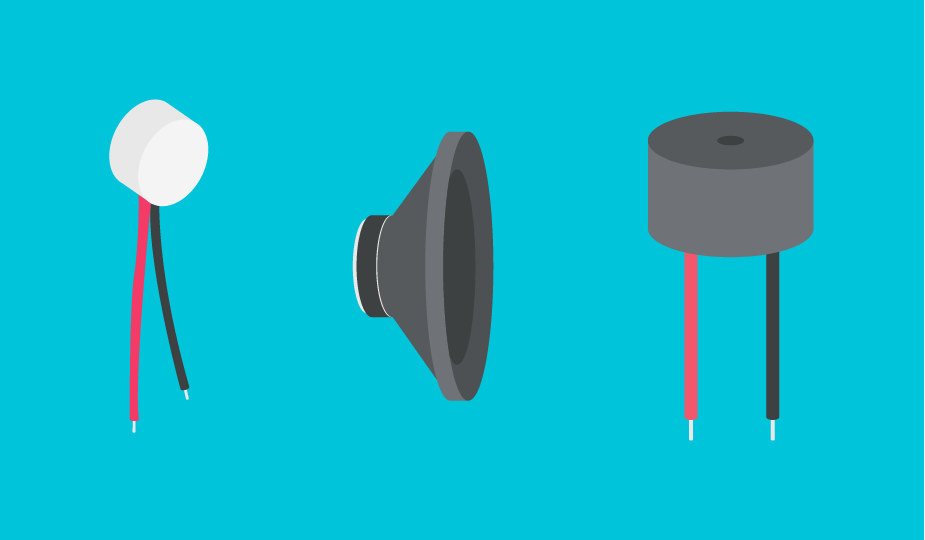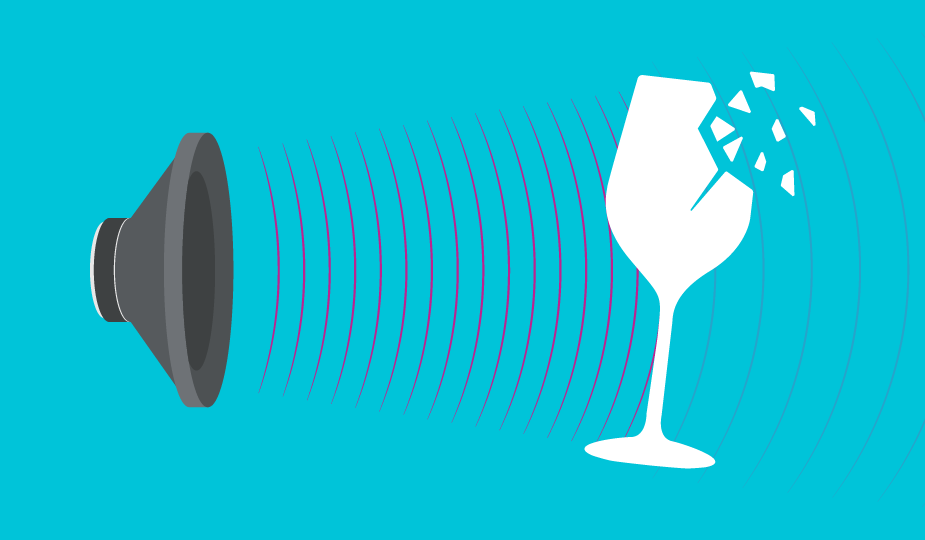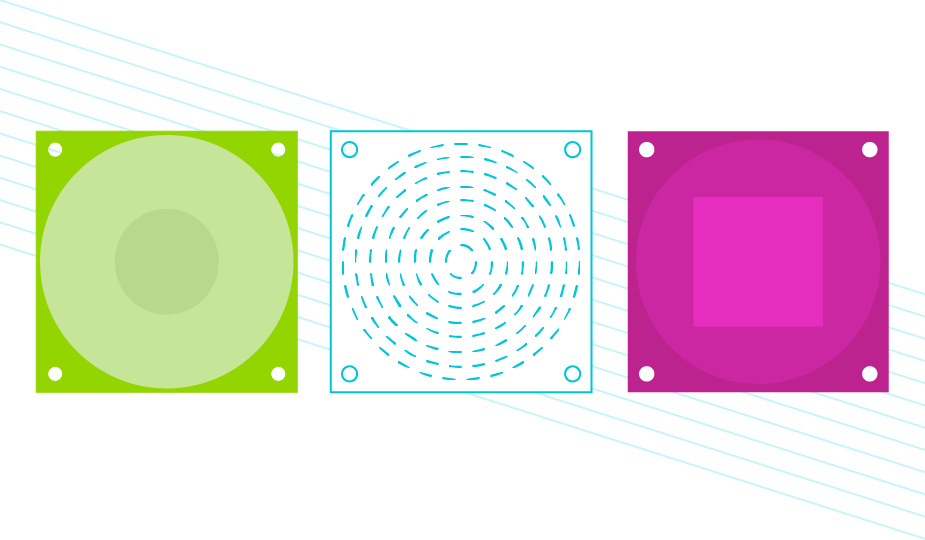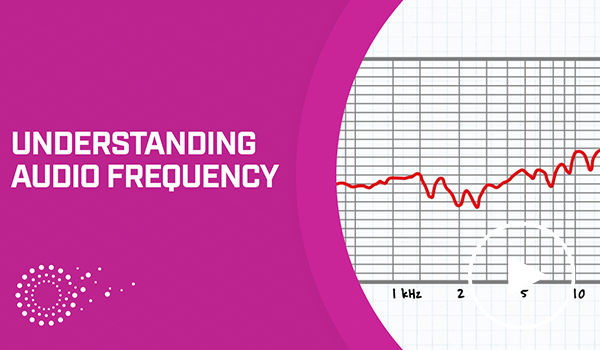All You Need to Know About Speakers in Audio Design

Speakers serve as indispensable components in our auditory experiences, converting electrical signals into the vibrant sounds we perceive. To grasp the intricacies of how speakers operate and influence sound production, it is essential to delve into their underlying mechanisms and key components. This blog post serves as a comprehensive overview of utilizing speakers in audio design, including their basic operation, key specifications, design considerations, cone and magnet types, and much more.
How Do Speakers Work?
Sound production in a speaker involves a precise interplay between electromagnetism and mechanical motion. It begins with an electrical signal, which serves as a representation of the audio we want to hear. This signal can originate from various sources such as a smartphone, laptop, or any other audio device capable of generating electrical impulses. Whether it's the melody of a favorite song, the crisp dialogue of a podcast, or the immersive sound effects of a movie, the signal is an electrical representation of the auditory experience speakers produce.
Inside the speaker, key components come into play. The core components are the voice coil and the permanent magnet. The voice coil, made of wire, is connected to a flexible cone or diaphragm. This voice coil surrounds a sturdy permanent magnet, laying the groundwork for sound production. When the electrical signal flows through the speaker's wires, it energizes the voice coil, initiating a series of actions governed by electromagnetism. This electrical energy creates a magnetic field around the coil, with polarity mirroring the changing electrical signal.
The essence of speaker operation lies in the interaction between these magnetic fields. As the fields fluctuate, they alternately repel and attract, propelling the voice coil and its attached cone into a rapid oscillating motion. The oscillating motion interacts with the surrounding air molecules, causing them to vibrate in sync with the cone's movement.
These vibrating air molecules generate pressure waves that propagate through the air, eventually reaching our ears as sound. Our brains interpret these pressure waves as auditory signals, completing the process of sound perception.

Digging deeper into speaker anatomy reveals several key components that work in harmony to produce sound: cone, voice coil, plate, magnet, frame & yoke, and printed circuit board (PCB). Shown here is an illustration that highlights speaker structure and breaks down the individual components of a typical speaker.

The illustration shown here highlights the structure of a typical speaker after all the components have been assembled.

Key Speaker Specifications
With the basics of speaker operation and structure now covered, there are a variety of key specifications and performance criteria to keep in mind when selecting a speaker for your design.
- Sound Pressure Level (dB): Sound Pressure Level (SPL) measures the intensity of sound waves in the air, or how loud a sound is. SPL is influenced by factors like distance from the sound source and environmental conditions. By convention, decibels (dB) are used to measure SPL as detailed in our blog post, The Basics of SPL and dB. SPL is also an essential parameter for assessing noise levels in various settings, from industrial environments to residential areas, providing valuable information for noise control and regulation.
- Max Input (W): Maximum power that can be used for a very short period of time without permanently damaging the speaker.
- Nominal Input (W): The nominal input wattage is the amount of power the speaker can safely handle during long-term use.
- Impedance (Ohm): Impedance is the amount of resistance to the flow of current from an amplifier. The lower the impedance, the more power the speaker will draw. It is important to match the speaker impedance to what is compatible with the amplifier to ensure optimal performance and prevent potential damage to the equipment. Matching impedance also helps in achieving efficient power transfer and maintaining fidelity in audio reproduction.
- Resonant Frequency (Hz): This is the frequency at which a speaker vibrates most efficiently. Resonant frequency specifications provide a means to approximately compare the low frequency response of different speakers. Our blog on resonance and resonant frequency in audio design provides a deeper dive on this subject.
- Size (mm): Frequency range is determined by the size of the speaker. Smaller speakers will operate optimally at higher frequencies, while larger speakers operate more optimally at lower frequency ranges. Low frequencies are used for deep bass sounds, while mid-range frequencies are used for voice reproductions.
- Total Q: This Theile-Small value serves as a broad reference for determining the ideal enclosure type. A total Q value of 0.4 or lower suggests that the speaker is best suited for a vented enclosure. If the total Q falls between 0.4 and 0.7, a sealed enclosure is recommended. A total Q of 0.7 or higher indicates that the speaker is suitable for free-air, semi-open back, or infinite baffle setups. Nevertheless, there are exceptions to these guidelines, and it's important to evaluate all relevant parameters.
Speaker Size and Shape Considerations
In general, speakers with larger surface areas will produce greater sound levels for the same drive signal and will also have better low frequency response. The performance of smaller speakers can be greatly enhanced using DSP pre-distortion; this technique is often incorporated in cell phone and laptop computer designs. A small amount of performance enhancement can be achieved with the design of the enclosure surrounding the back of the speaker. Read our speaker enclosure blog post for more details.
The shape of the speaker cone is often determined by the available installation space. An oval shaped speaker cone allows a greater speaker cone surface area to be fit into a non-square space. The frequency response graph of the speaker should be examined to determine if the size or shape of the speaker is adversely affecting the desired performance of the speaker.
Speaker Mounting Considerations
As for connection configurations, speakers are available in various options depending on the application need, including wire leads, through hole, solder pads, and more.

Environmental and Application Considerations
Speakers can come with a variety of ingress protection (IP) ratings for designs dealing with moisture and contaminants found in harsh environments. CUI Devices also offers medical grade speakers that are designed to meet IEC 60601-1-8 regulatory standards for use in medical alarm systems. Check out our blog post A Guide to IEC 60601-1-8 and Medical Alarm Systems for more details.
Key Speaker Measurements & Tests
Once a speaker is selected using the key specifications mentioned above, there are several additional speaker measurements and tests that can be performed to ensure a speaker is properly integrated into a design and performing to specification. CUI Devices’ audio design services are available to assist engineers with these key measurements and tests listed below.
- Frequency Response: A visual representation of how well an audio component reproduces the audible range of sound.
- Stepped Frequency Sweep: This is similar to a frequency response, but specifically targets alias frequencies for a more comprehensive frequency response.
- Level & Gain: Level is key in determining how much energy the device can output. Gain is a measurement of the device’s output level divided by the device’s input level.
- Total Harmonic Distortion plus Noise (THD+N): Harmonic distortion is the unwanted addition of new tones to the audio signal. THD+N is a convenient and telling single number mark of performance, widely understood and accepted.
- Phase: Phase measurements are used to describe the positive or negative time offset in a cycle of a periodic waveform measured from a reference waveform. The two most common measurements are device input/output phase and interchannel phase (for multiple speakers in a system).
- Rub & Buzz: A speaker test that can detect the presence of higher frequency harmonic products produced in response to a low-frequency stimulus.
- Thiele-Small: A set of values that captures the complex impedance of a loudspeaker under testing and delivers calculated electromechanical parameters that define the low frequency performance of loudspeaker drivers. Thiele-Small results, which include the total Q, accurately describe the interactions between loudspeaker and enclosure and are vital to both loudspeaker system design and production testing.
- Impedance: Speaker impedance is a measure of the opposition that a speaker presents to the flow of an alternating current (AC) signal, such as audio from an amplifier. It is measured in ohms and indicates how much resistance the speaker offers to the electrical signal.
Frequency Response Curves
For speakers, the word "respond" represents the speaker's ability to recreate the input frequencies. When this data is plotted, it forms a frequency response graph that provides a visual representation of amplitude over frequency generated by the speaker. The vertical axis is labeled as the level of sound in decibels (dB) and the horizontal axis is labeled as the frequency in Hertz (Hz). A perfect speaker would recreate every frequency without attenuation or gain. However, there is no perfect speaker. The frequency response curve is a series of data points that represent how a speaker responds to a range of input frequencies. Our two blog posts on audio frequency range and resonant frequency discuss frequency response charts in greater detail.

Speaker Cone Materials
The type of material used for the speaker cone, among other factors, affects the sound quality. It's more accurate to assess this by listening and experimenting rather than relying solely on numbers and data. The durability of common cone materials is also important to consider. Generally, plastic is the most durable, followed by paper & cloth, and then foam. However, actual speaker lifespan depends on factors such as humidity, environment, and application specifics. Here’s a brief overview of the most common cone materials.
Plastic Cones
Speaker cones made with plastic are popular for their durability and resistance to environmental factors like dust and water. They're also easy to manufacture with precise tolerances, leading to better performance in terms of distortion reduction and sound quality. Plastic diaphragms rapidly absorb and dissipate mechanical energy, exhibiting good damping properties akin to traditional paper cones.
While often called plastic, these materials encompass various composites. The cost varies based on factors like thickness, pressing technique, size, and temperature resistance.
Paper & Cloth Cones
Paper and cloth cones are known for great sound and self-damping but can suffer from humidity. They're made from various wood fibers with additives like cotton and wool, blended for specific sound characteristics. This blend enhances strengths and compensates for weaknesses, resulting in diverse sound. They're predominately used in larger speakers due to their light weight.
Foam Cones
Foam is seldom utilized as the sole material for diaphragms and is typically blended with other materials such as metal, plastic, or paper. In composite diaphragms, foam is incorporated into the interlayers. Its primary function is to enhance internal loss, a critical physical characteristic for speakers.
High internal loss aids in minimizing the inherent sound characteristics of the raw materials. For instance, metal diaphragms exhibit lower internal loss, making it prone to producing metallic sounds. Conversely, paper cones possess higher internal loss, resulting in a more natural sound with minimal influence from the raw materials’ timbre.
Speaker Magnet Types
Another key component of a speaker’s overall construction and performance is the magnet type. Below are the most common magnet types used in speakers today, each listing their main benefits, uses, and tradeoffs.
Ferrite Magnets
Ferrite magnets, also called ceramic magnets, are low-cost magnets that maintain their magnetic strength well. They are heavy and are not generally used for applications that require portability. Speakers that incorporate ferrite magnets will tend to sound better when driven near the maximum handling capacity. Ferrite magnets are also well-suited for applications subject to moisture because they are naturally corrosion resistant.
AlNiCo Magnets
AlNiCo magnets were the first magnets used in speakers and are what helped give them a smooth classic tone. Speakers that incorporate AlNiCo magnets are a more expensive option than ferrite-based speakers, but they are less prone to cracking. These magnets are definitely less common than neodymium magnets in the present day, but they still find uses in high-end applications where precision tuning is important.
Neodymium (NdFeB) Magnets
Neodymium magnets, also known as rare earth magnets, offer the highest field strength of any permanent magnet known. Speakers made with NdFeB magnets offer a good frequency response, are light in weight, and are much smaller than speakers that incorporate ferrite or AlNiCo magnets. This makes them an ideal magnet for small speakers that are required to output a high SPL. The main downside of neodymium magnets is that they are more susceptible to shattering.
Samarium Cobalt Magnets
Samarium magnets are less commonly used than the other magnet types due to their higher cost. Their main advantage is their corrosion resistance and steady output when faced with extreme temperature variations, making them ideal for harsh environments. They are prone to shattering and are not as strong as neodymium magnets. However, cost remains their biggest downside.
結論
Understanding speaker mechanics can allow engineers to craft immersive auditory experiences. As we have hopefully demonstrated throughout this blog post, there are a lot of components and specifications that can go into proper speaker selection. However, even when equipped with a greater understanding of key speaker parameters, nothing can fully replace proper testing and measurement of the selected speaker in your final design. Thankfully CUI Devices’ full range of miniature speakers and standard speakers as well as our audio design services are here to help!







